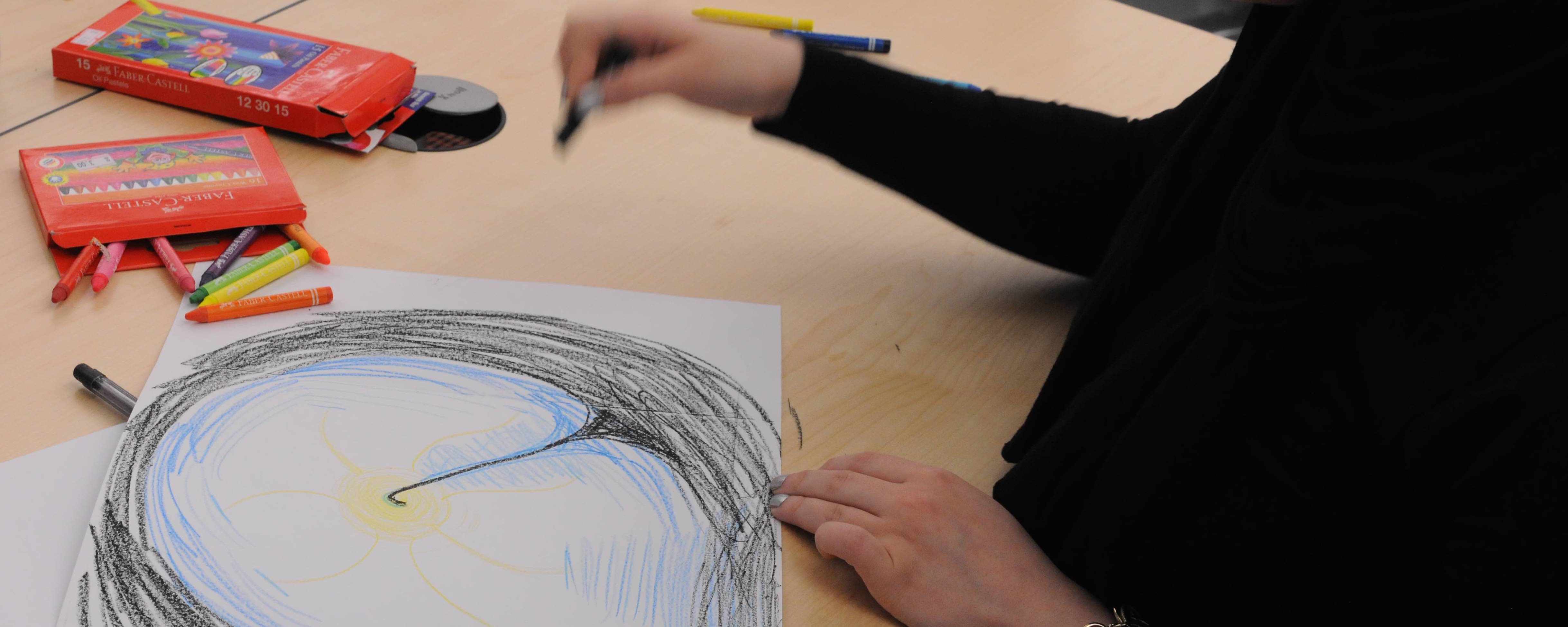Exploring the impact of visual arts and art therapy on healthcare
 The Visual Arts and Medicine event was open to healthcare professionals of all disciplines from WCM-Q and other healthcare institutions
The Visual Arts and Medicine event was open to healthcare professionals of all disciplines from WCM-Q and other healthcare institutions
The impact of the visual arts on medicine, healthcare and patient wellbeing, including art therapy interventions, was explored at a symposium at Weill Cornell Medicine-Qatar (WCM-Q).
The Visual Arts and Medicine event, part of the WCM-Q Lives in Medicine series, explained the theory and practice of art therapy in patient care, and also discussed ways in which visual art in healthcare settings such as hospitals can positively affect mood and therefore potentially lead to better healthcare outcomes.
Sara Powell and Andrew Wright, two licensed art therapy specialists, gave a joint presentation summarizing the theory of art therapy and its applications in patient care, and presented a sample case study demonstrating the effectiveness of art therapy in practice.
Dr. Aicha Hind Rifai, Assistant Professor of Clinical Psychiatry, gave a joint presentation alongside her WCM-Q colleague Dr. Alan Weber, Associate Professor of English.
Dr. Weber addressed the visual arts. He said: “Visual art can have a very significant impact on healthcare in many ways. This includes the effect that the décor of a hospital has on a patient’s sense of wellbeing, the use of comic books to help medical students understand their patients better, and encouraging students to study fine art to develop their ability to interpret and assimilate complex visual information, which is particularly important when interpreting physical symptoms or medical images such as x-rays or CT scans.”

Dr. Rifai explained the use of art therapy along with medications to address the symptoms of apathy and social withdrawal in patients with schizophrenia. She also described the benefits of using art therapy in the treatment of patients with Alzheimer’s disease who are able to engage in such therapies even after they have lost their language ability and many other aspects of their cognition.
Dr. Rifai said: “Art therapy was born in the second part of the 19th century as the discipline of psychiatry developed and interest in the inner world of patients grew. Psychological theories supported the use of the visual arts as media for the diagnosis and the treatment of various psychiatric conditions, from psychological trauma to anxiety and depression.
“Art therapy can be an extremely effective treatment but it is not widely practiced in the Gulf region. This event forms part of a wider effort to encourage the use of art therapy in Qatar, where appropriate, for the benefit of patients.”
The activity was open to healthcare professionals of all disciplines from WCM-Q and other healthcare institutions and was accredited locally by the Qatar Council for Healthcare Practitioners-Accreditation Department (QCHP-AD) and internationally by the Accreditation Council for Continuing Medical Education (ACCME).
